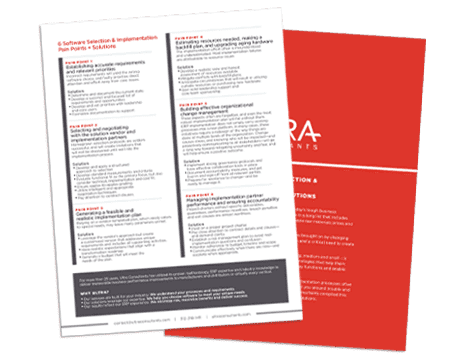4 Potential Solutions for the Manufacturing Labor Shortage
For years, manufacturers have been frustrated (and limited) by a shortage of qualified labor – a problem driven by a flood of retiring older workers and a trickle of younger workers interested in jobs in the sector.

In 2021, skilled manufacturing jobs continue to go unfilled, despite the ongoing economic recovery from the pandemic downturn, strong job growth overall, rising wages across nearly every vertical and high unemployment in the service sector (and others). The result is production bottlenecks, reduced capacity, unfilled orders, low inventories and lost sales.
So now, as the sector heads into the summer (typically a down period), manufacturers are faced with increased orders driven by pent-up demand, and with a high level of vacancies dogging virtually all its verticals. What is the outlook for the remainder of 2021? And, more important, what are the solutions?
Deloitte: Accelerate automation and robots, and build talent ‘ecosystem’
Global management consulting firm Deloitte notes in its “2021 Manufacturing Industry Outlook” that the manufacturing industry continues to struggle to fill jobs with skilled workers. “Despite a loss of overall employment volume, manufacturing consistently posts monthly average job openings of 400,000,” the report states.
Deloitte says smart, aggressive manufacturers are leveraging technology to resolve the problem: “To manage persistent output levels with a reduced workforce and constrained environment, many manufacturers have accelerated their adoptions of automation and robotics.”
This strategic change will drive a re-evaluation and re-definition of the workforce, the outlook predicts. “As robots, cobots and other forms of automation grow in the production environment, the need for a workforce to manage and interact with these technologies also increases. These ‘middle-skill’ roles require technical expertise and regular up-skilling.
6 Software Selection & Implementation Pain Points + Solutions

“What’s needed,” the report continues, “is greater agility and cross-functionality in the way manufacturers define roles, the skills needed for them, and training programs to re-skill the existing workforce.
To bolster the talent pipeline, Deloitte suggests manufacturers develop a talent “ecosystem,” which, for example, could include train-to-hire partnerships with technical schools. A 2020 Deloitte and MAPI Ecosystem Study showed that more than 80% of surveyed manufacturers believe strategy is critical to competitiveness, and that 41% already have started to form these kind of relationships.
Thomas: Build a workforce-ready talent pipeline with training and partnerships
Noting that recent research from the Manufacturing Institute and Deloitte predicts as many as 2 million unfilled manufacturing jobs by 2025, Thomas, a top provider of data and analysis for the industrial sector, recommends a multi-channel approach to building a talent pipeline.
“Manufacturing careers offer good salaries and opportunities to be on the cutting edge of new technologies, a recent blog post (“Top 4 U.S. Manufacturing Challenges And How To Overcome Them”) argued. “But they often are misunderstood in the eyes of young people and those who influence them. In 2014, seven out of 10 parents wanted manufacturing in their community, but only three in 10 encouraged their children to pursue manufacturing careers.”
For manufacturers, the blog stated, this gap presents an opening to tell their company story and share their career opportunities with students, parents, teachers, counselors and the community. Also, partnerships with local trade schools and colleges, and in-house mentoring, apprenticeship and internship programs, are helpful for teens and young adults entering the industry, as well as older employees who want to re-enter the workforce or enhance their skills.
And education for your current employees is critical to meet current and future market demands, the blog pointed out: “Don’t let your employees resist new technology out of fear or inadequate technical knowledge. Support a continuous learning culture and implement learning opportunities in your workforce as technologies and business practices quickly evolve.”
Korn Ferry: Re-think education, hire straight from school and leverage continuous learning
“As with many economies, the onus falls on [U.S.] companies to train workers, and also to encourage governments to rethink education programs to generate the talent pipelines the industry will require,” said Werner Penk, president of Korn Ferry’s Global Technology Market practice.
Forward-looking organizations, said Jean-Marc Laouchez, president of the Korn Ferry Institute, are taking responsibility for training talent, and are increasing the hiring of people straight out of school – as well as working to instill a culture of continuous learning and training. “Constant learning – driven by both workers and organizations – will be central to the future of work, extending far beyond the traditional definition of learning and development,” Laouchez said.
Association of Equipment Manufacturers: Consider ex-offenders for training and jobs
“One of the largest and least engaged pools of talent is the formerly incarcerated,” she wrote. “Although 70 million Americans have some sort of criminal record, manufacturing has been slow to embrace the opportunity of giving ex-offenders a second chance.”
Davis noted that between 2018 and 2020, the U.S. Department of Labor awarded more than $260 million in grants to fund workforce re-entry programs for incarcerated individuals. Prison systems also provide training in the skilled trades, including welding, hydraulics, pneumatic and electrical. And ex-offenders have access to support organizations to enhance work skills, teach life skills and support their re-entry. These investments pay off, she pointed out: “Study after study shows that connecting ex-offenders with meaningful, good-paying jobs is one of the greatest preventers of recidivism.”
“When it comes to filling open positions, it’s critical for manufacturers to ‘leave no stone unturned,’” Davis wrote. “For many, that means targeting talent pools they’ve overlooked in the past.”
“After all, the skills gap today is just a taste of the skills gap projected in the years to come,” Davis concluded. “With a growing number of workers nearing retirement, manufacturing will need to embrace change – both on the production floor and in the human resources office – to meet current production goals, execute further growth strategies and, most importantly, ensure a bright future for the industry.
Table of Contents
More ERP material...
AI in Food and Beverage Manufacturing
Discover how AI is revolutionizing food and beverage manufacturing, enhancing quality, reducing…
How ERP for Quality Control Eliminates Manual Documentation Chaos
This post will examine why managing quality records outside of an ERP…
Assessing Your AI Maturity
This article breaks down how businesses can measure their AI maturity to…



